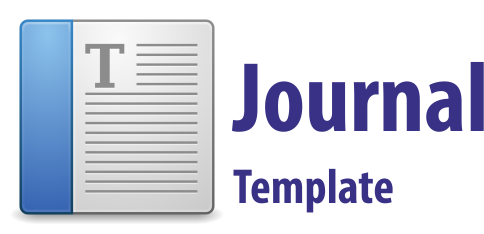Perkawinan Adat Suku Dayak Meratus Di Kalimantan Selatan
DOI:
https://doi.org/10.51749/jphi.v2i1.17Keywords:
Perkawinan, Adat, Dayak, marriageAbstract
This research is aimto study, the customary marriage law of indigenous people of the Dayak Kotabaru Regency, South Kalimantan.Second, the marriage law based on the Dayak Customs of the Kotabaru Regency of South Kalimantan comparedto studies and teachings of the Customary Law? The research method used in this study is the socio-legal legal research. Theresearchis not only limited to examining the law as a series of norms or statutory rules related to customary law of Dayak, but also examining the living law. Such legal research can also be called a sociological juridical research method. The results ofthe research show that first, there are two concepts of marriage relations in the Dayak customary tribe, first there is marriage based on the sacred bond of marriage (legal marriage) and secondly is 'palas', which is a relationship that appears without a legalmarriage bond and can even be considered adultery. Second, the legal norms of Dayak customary marriage are based on the principles of customary law, namely the principle of harmony, the principle of decency and the principle of linearity.
References
Ali, Zainudin. (2008). Pelaksanaan Hukum Waris Di Indonesia, Jakarta: Sinar Grafika.
Amiruddin dan Zainal Asikin. (2006). Pengantar Metode Penelitian Hukum, Jakarta: PT. Raja Grafindo Persada.
Butarbutar, Elisabeth Nurhaini. (2018). Metode Penelitian. Bandung: PT. Refika Aditama.
B. Ter Haar Bzn., Terjemahan Poesponoto, Soebakti. (1976). Azas-azas dan Susunan Hukum Adat. Jakarta: PT. Pradnya Paramita.
Fajar, Mukti dan Yulianto Achmad. (2010). Dualisme Penelitian Hukum Normatif dan Empiris. Yogyakarta: Pustaka Pelajar.
Koesnoe, Mohammad. (1979). Catatan-catatan terhadap Hukum Adat dewasa ini, Surabaya: Airlangga University Press.
__________________. (1974). “Tentang Tiga Asas-Asas Kerja Untuk Menghadapi Perkara-Perkara Hukum Adat Indonesia,” dalam Lima Puluh Tahun Pendidikan Hukum Di Indonesia, Jakarta: Fakultas Hukum Universitas Indonesia.
Murdan. (2016). “Pluralisme Hukum (Adat Dan Islam) Di Indonesia”, Jurnal Kajian Hukum Islam, Program Pasca Sarjana, UIN Sunan Kalijaga Yogyakarta, Vol. 1, No. 1, Juni.
Marzuki, Peter Mahmud. (2009). Penelitian Hukum, Jakarta: Kencana Prenada Media Group.
Muhamad, Abdulkadir. (2004). Hukum dan Penelitian Hukum. Bandung: PT. Citra Aditya Bakti.
Rampay, Darwis Luther. (2003). Perkawinan Menurut Hukum Adat Dayak Ngaju Kalimantan Tengah Ditinjau Dari Undang-Undang Nomor 1 Tahun 1974 Tentang Perkawinan. http://repository.unair.ac.id/35031/12/jiptunair-gdl-s2-2004-rampay2c-1042-perkawinan-th_29-03.pdf, hlm.6. Diakses pada tanggal 23/03/2019.
Riwut, Tjilik. (1993). Kalimantan Membangun Alam dan Kebudayaan. Yogyakarta: PT. Tiara Wacana Yogya.
Soekanto, Soerjono. (2008). Pengantar Penelitian Hukum, Jakarta: Universitas Indonesia (UI-Press), hlm 43. Lihat pula Muhammad, Abdulkadir. (2004). Hukum dan Penelitian Hukum, Bandung: Citra Aditya Bakti.
Syamsudin, M. et al.. (1998). Hukum Adat dan Modernisasi Hukum. Yogyakarta: Fakultas Hukum Universitas Islam Indonesia.
Wiranata, I Gede. (2005). Hukum Adat Indonesia, Bandung: PT. Citra Aditya Bakti.
Yati Nurhayati, (2013), Perdebatan Antara Metode Normatif Dengan Metode Empirik Dalam Penelitian Ilmu Hukum Ditinjau Dari Karakter, Fungsi, dan Tujuan Ilmu Hukum, Al Adl: Jurnal Hukum, Vol. 5, No. 10.
Yati Nurhayati, Ifrani, & M. Yasir Said, (2021), Metodologi Normatif dan Empiris Dalam Perspektif Ilmu Hukum, Jurnal Penegakan Hukum Indonesia, Vol. 2, No.1, Tahun 2021.
Downloads
Published
How to Cite
Issue
Section
License
Copyright (c) 2021 Jurnal Penegakan Hukum Indonesia

This work is licensed under a Creative Commons Attribution-NonCommercial-ShareAlike 4.0 International License.
JPHI is licensed under a Creative Commons Attribution-NonCommercial-ShareAlike 4.0 International License
Articles in JPHI are Open Access articles published under the Creative Commons CC BY-NC-SA License. This license allows reusers to distribute, remix, adapt, and build upon the material in any medium or format for noncommercial purposes only, and only so long as attribution is given to the creator. If you remix, adapt, or build upon the material, you must license the modified material under identical terms.











